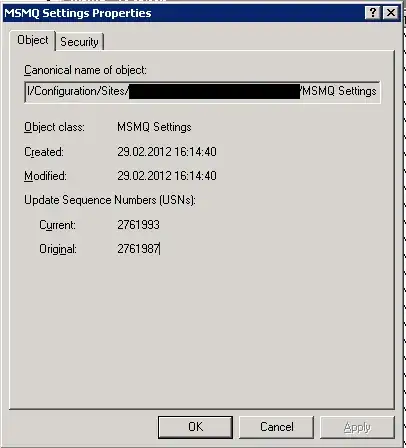Each Domain Controller holds a local USN counter that gets incremented by each write to the DC's database replica.
A digression between Current and Original simply means that the object was changed since creation.
You can inspect the USN at the last write time for each attribute on an object with repadmin.exe:
repadmin /showobjmeta DC01 "CN=SomeObject,OU=Computers,DC=domain,DC=tld"
Try this for size:
- Create a new user account object named "TestUser" in the users OU
- Inspect the output of
/showobjmeta from each domain controller (USNs should vary by DC):
repadmin /showobjmeta * "CN=TestUser,OU=Users,DC=domain,DC=tld"
- Make a change to an object attribute, "Description" is a great candidate
- Run
repadmin /showobjmeta again - the description attribute will have a newer USN on all Domain Controllers that have received the update, as well as on the Domain Controller on which you performed the update. Non-updated attributes (see whenCreated and objectGUID for control) will still have the original USN
Hope this makes sense
